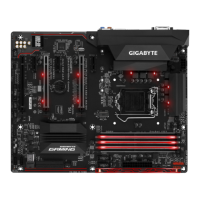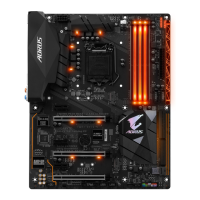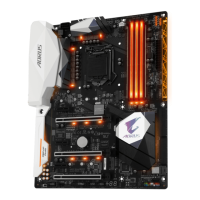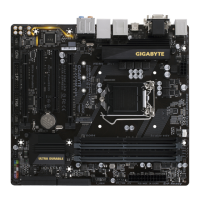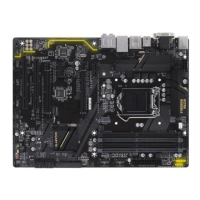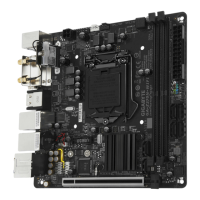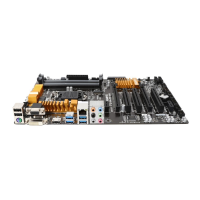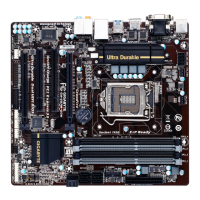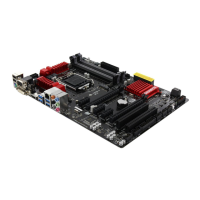InstallingtheSATARAID/AHCIDriverandOperatingSystem
With the correct BIOS settings, you are ready to install the operating system.
InstallingtheOperatingSystem
As some operating systems already include Intel
®
SATA RAID/AHCI driver, you do not need to install separate
RAID/AHCI driver during the Windows installation process. After the operating system is installed, we recommend
that you install all required drivers from the motherboard driver disk using "Xpress Install" to ensure system
performance and compatibility. If the operating system to be installed requires that you provide additional SATA
RAID/AHCI driver during the OS installation process, please refer to the steps below:
1. Copy the IRST folder under \Boot in the driver disk to your USB thumb drive.
2. Boot from the Windows setup disk and perform standard OS installation steps. When the screen requesting
you to load the driver appears, select Browse.
3. Insert the USB thumb drive and then browse to the location of the driver. The locations of the drivers are
as follows:
Windows32-bit:\iRST\f6py-x86
Windows64-bit:\iRST\f6py-x64
4. When a screen as shown, select Intel Chipset SATA RAID Controller and click Next to load the driver and
continue the OS installation.
PleasevisitGIGABYTE'swebsitefordetailsonconguringaRAIDarray.
3-2 EnablingIntel
®
Optane
™
Technology
SystemRequirements
1. Intel
®
Optane
™
SSD
2. The Optane
™
SSD must have at least 16 GB capacity, and it must have equal or smaller capacity than the
hard drive/SSD to be accelerated.)
3. The accelerated hard drive/SSD cannot be included in a RAID array
Step 1:
In BIOS Setup, go to BIOS and set CSM Support to Enabled and StorageBootOptionControl to UEFI. Then
go to Peripherals\SATAAndRSTConguration, set SATA Mode Selection to IntelRSTPremiumWithIntel
Optane System Acceleration. Save the changes and exit BIOS Setup.
Step 2:
Enter the operating system, launch the Intel
®
Rapid Storage Technology utility from the Start menu, and then
enable Intel
®
Optane
™
Technology.
- 43 -
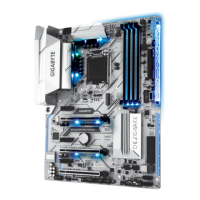
